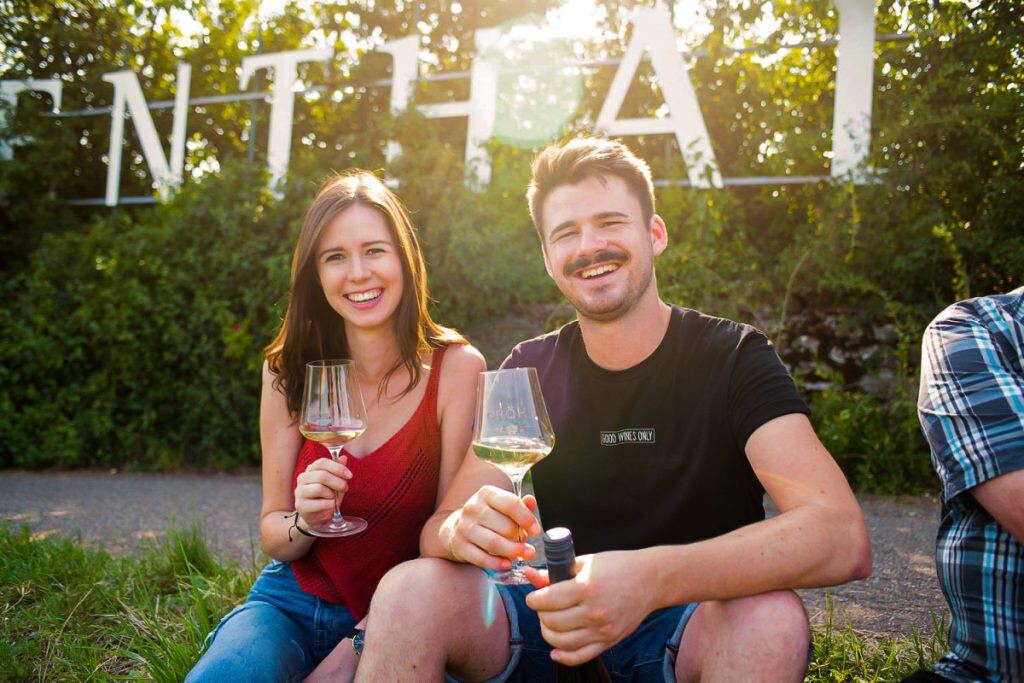Weingut Stift Göttweig
Fritz Miesbauer and his team cultivate the vines and produce the wines of the Göttweig abbey. The...

Johannes likes to say, “half of my heart is for Riesling, half of my heart is for Pinot Noir.” Today, the Spätburgunder is more Burgundian, lighter, and fresher, with a more nuanced use of oak.
Location: Weinolsheim, Rheinhessen, Germany
Hectares: 25
Farming: Organic
People: Franziska and Johannes Gröhl
Website: https://www.weingut-groehl.de/
Johannes likes to say, “half of my heart is for Riesling, half of my heart is for Pinot Noir.” Today, the Spätburgunder is more Burgundian, lighter, and fresher, with a more nuanced use of oak.
Johannes Gröhl and his sister Franziska are the 13th generation of Gröhls to grow and produce wine in Weinolsheim since 1625. The village of Weinolsheim is a short, 10-minute drive southwest of Nierstein and the famous Roter Hang, where some of Germany’s finest vineyards cling to the steep red slope facing the Rhein. The Roter Hang is where you’ll find the majority of Gröhl’s vineyards, including the famous Riesling sites of Pettenthal, Ölberg, and an important Spätburgunder vineyard on the other side of Nierstein, Hölle. Vinum magazine has nominated Weingut Gröhl for their 2022 Winemaker of the Year award, and it’s easy to see why. While the quality and fame of the vineyards are the first things to grab your attention at this estate, Weingut Gröhl stands out as an innovative and modernizing producer driven by a new generation of talent and energy.
The vineyards concentrate on the Nierstein Roter Hang sites of Pettenthal, Ölberg, and Hölle, and south of Nierstein in Oppenheim with Sackträger and Herrenberg. Their 25 hectares include vineyards in Dalheim and Weinolsheim, meaning Johannes Gröhl has an assortment of microclimates and soils to produce a diverse range of wines. Despite the estate’s long history, these 25 hectares were assembled in short order by the parents of Johannes and Franziska, Eckehart and Angela. Because of their many siblings, they had just 2.5 hectares when they took over in 1994. Under their stewardship, Weingut Gröhl slowly grew, and was better known as a source of Spätburgunder before gaining more Riesling sites on the Roter Hang. Johannes likes to say, “half of my heart is for Riesling, half of my heart is for Pinot Noir.” The winery produces 30% red wine today.
Perhaps the biggest change instituted by the young siblings is the conversion to organic farming and a renewed dedication to old clonal material and massal selection for replanting. Organic, for Johannes Gröhl, is the only way forward in a changing climate, and he believes cuttings from old plants (sometimes 100 years old) give their vines resistance to vine maladies and diseases. Another thing to note is the stylistic change in the wines, which has slowly taken hold since Johannes started working in the cellar alongside his father in 2018. “You could say the Pinots were more Germanic,” says Johannes of the Pinots in the past. Today, the Spätburgunder is more Burgundian, lighter, and fresher, with a more nuanced use of oak and around 20-30% whole clusters included in the fermentation. And the Rieslings are superbly made with a balance of delicacy, concentrated firmness, and structure.
Tech sheets/Shelf talkers/Ratings:
Weingut Gröhl Riesling “Roter Hang” Rheinhessen 2023
Weingut Gröhl Riesling “Roter Hang” Rheinhessen 2022
Weingut Gröhl Riesling Ölberg Rheinhessen 2022
Weingut Gröhl Riesling Pettenthal Rheinhessen 2022
Weingut Gröhl Riesling Pettenthal Rheinhessen 2021
Weingut Gröhl Frühburgunder Dalheimer Rheinhessen 2022
Weingut Gröhl Frühburgunder Dalheimer Rheinhessen 2020
Weingut Gröhl Spätburgunder Rheinhessen 2022
Weingut Gröhl Spätburgunder Rheinhessen 2021
Weingut Gröhl Spatburgunder Nierstein Hölle Rheinhessen 2018

Fritz Miesbauer and his team cultivate the vines and produce the wines of the Göttweig abbey. The...

Weingut Thörle receives consistently high scores from critics every year, and visitors to the...

Balthasar Ress is a family-owned estate founded in 1870 in the Rheingau village of Hattenheim.